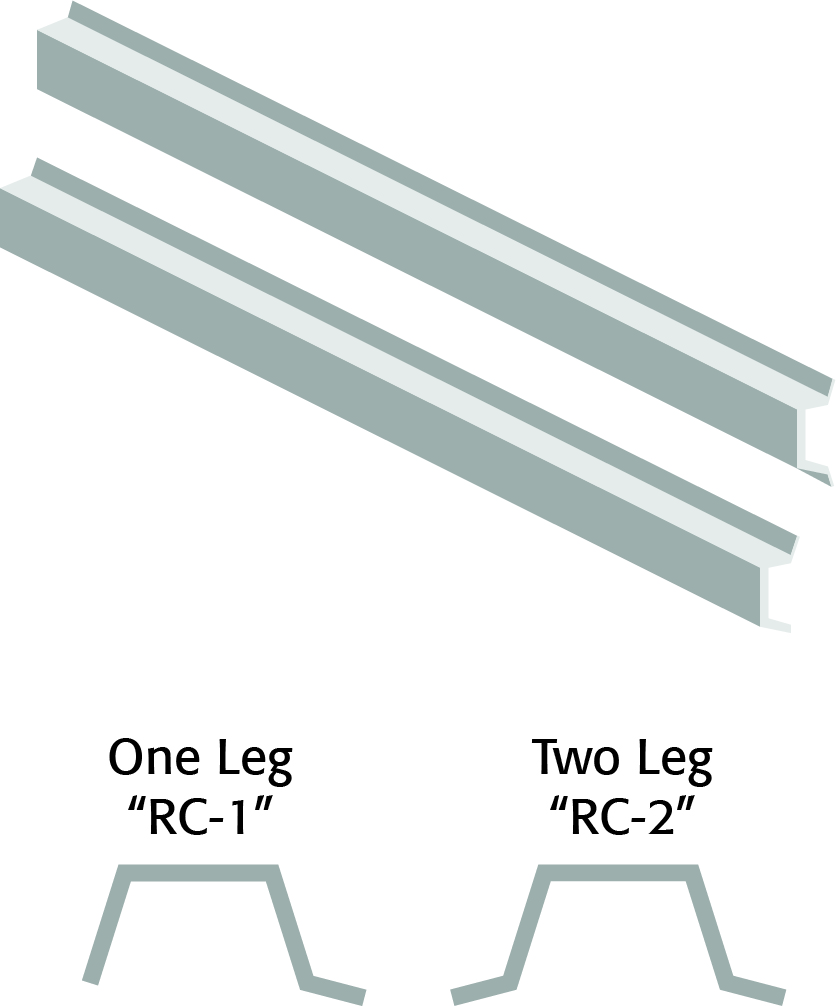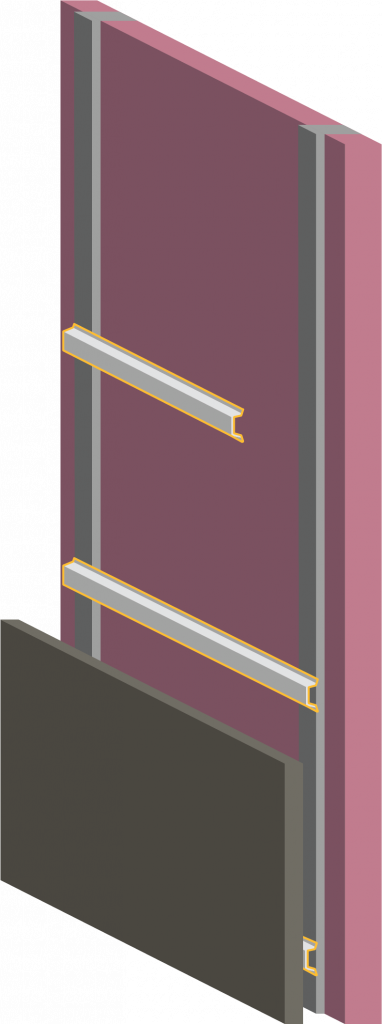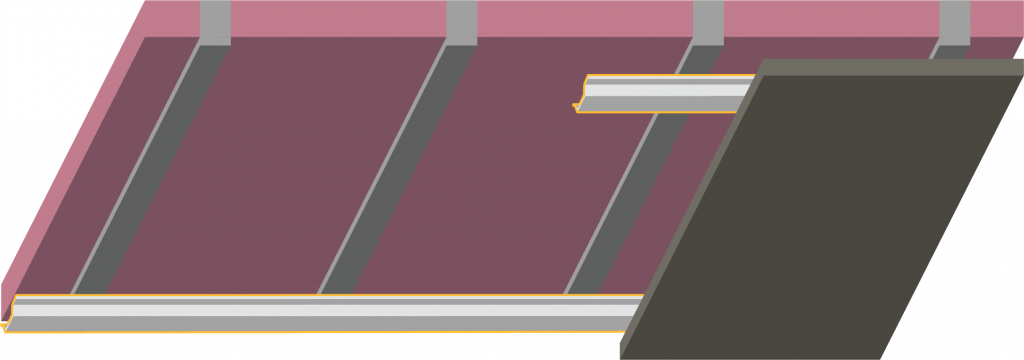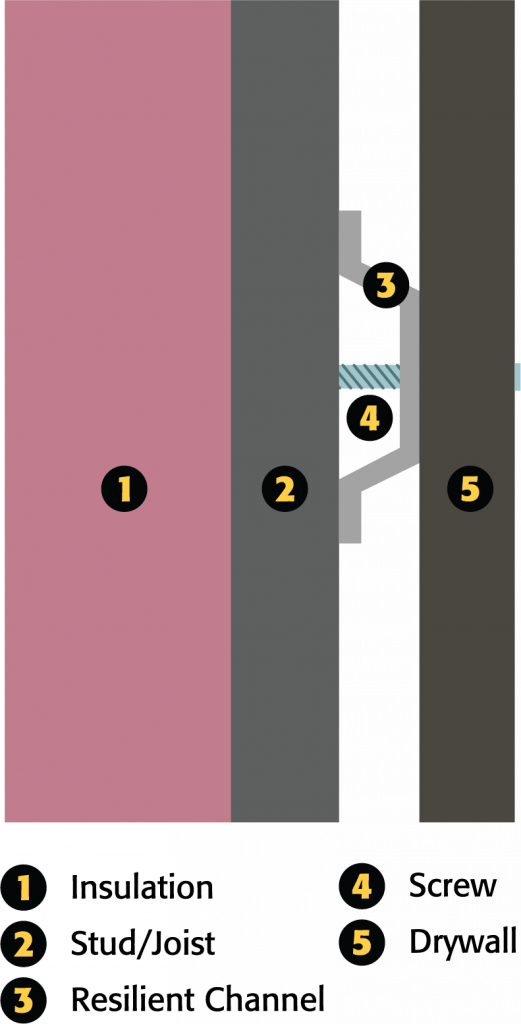We rely on this 1 thing. But does it really work?
The most common tool builders use in walls and ceilings to mitigate sound travelling between rooms and units is the good ol’ resilient channel. What exactly is it?
Appearance
Resilient channels are basically long steel thin “bars” that have either one leg or two legs as drawn below.

How they are used
They come in either one leg or two legs, and are installed between the studs or joists and the drywall. Below shows how they are installed in both a wall and ceiling situation.


The way they are installed is very simple. A screw is drilled through the channel and into the wood studs or joist. The “legs” of the channel faces the studs. The flat side of the channel is then drilled to the drywall. Below illustrates the build up.

How do they work?
Resilient channels are low cost methods of reducing sound transmission between walls and ceilings. As sound waves travel through the walls and ceilings, the sound waves are dampened because they create an extra distance between the wall and the insulation.
How effective are they, really?
Not that effective. In fact, they are incredibly unreliable due to the saturated variations available on the market. The original design (RC-1) which went through many laboratory tests and catalogued in design manuals, no longer exists. Other brands decided to then create their own variations. Due to this, they are never standardized in terms of their design and overall quality, which makes it almost impossible to know whether the one you have installed is even effective enough, or at all since their performances will vary greatly. Some companies will even produce multiple versions with different properties but labeled the same, making it very unlikely that a contractor will end up using the correct product for their project.
Another big reason why they are not effective is the double leg design. The support from both sides of the mounting face of the resilient channel gives sound waves an extra path to travel along.
Installations methods also varies greatly from different resources. A lot of times, these installation methods aren’t even correct. Some companies will show the resilient channel being installed upside down. A popular Youtube video that teaches the installation process not only show the resilient channel being installed upside down, but also installed between two layers of drywall. Another easy mistake that can be made during installations is the screw type and position. A screw that is too long or positioned incorrectly will make the space created by the resilient channel between the wall and the stud a lot shorter, greatly reducing the resilient channel’s effectiveness.
So…what are the alternatives?
The most common alternative we suggest to counter this problem is the use of sound isolation clips. Sound isolation clips, sometimes called sound clips, are essentially products that pair with resilient channels to increase the overall acoustic effectiveness.
Pliteq’s GenieClip RST is incredibly easy to install. It is first screwed directly to the wooden stud or joist, then the resilient channel is simply snapped on to the clip, and finally the drywall is then screwed on to the channel. This not only prevents the the easy mistake of having the screw installed too deep causing a shorting, but also overall increases the space between the drywall and the wooden studs greatly. The increase space will mitigate more sound waves travelling through the walls, greatly reducing the overall noise.
Closing thoughts…
It’s interesting to realize that a method that has been so overused till this day, is actually one of the least effective ways. We tend to stick with the familiarity and go with the bigger crowd, but maybe there is more to what we are familiar with. Always do more research, and be more open to different options is the way to go!


